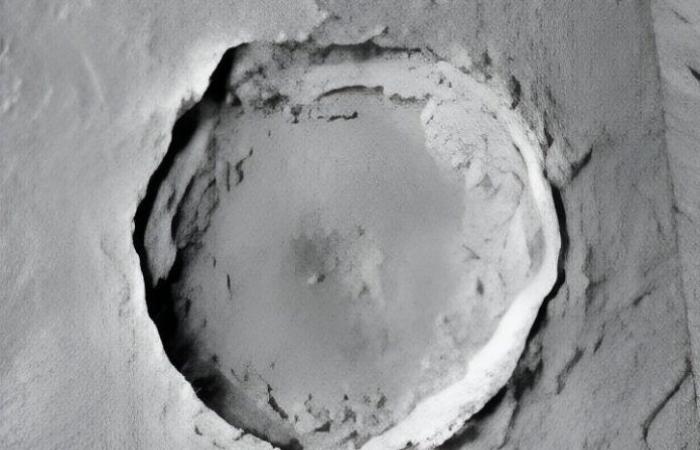When we think of the impact of a large asteroid we usually imagine a single, giant crater. This is partly real, as a huge hole usually erupts in the ground from the crash. However, he is not alone and the effects can be much more devastating than often imagined. At least that’s what Mars indicates.
What do you need to know?
- Crater on Mars discovered has thousands of “children”;
- These other craters are the result of material expelled by the main impact;
- The impacts are almost 2 thousand km long;
- Which makes this the crater with the largest extent of subsequent impacts ever seen on Mars.
What happens is a kind of rebound effect. The asteroid hits the ground at such an absurd speed that it opens a huge crater and breaks into thousands of pieces. These parts, along with tons of material extracted from the ground, are thrown with such extreme force that they return to the atmosphere and fall to Earth again, generating more craters. With information from Science Alert.
Read more:
A study released at the 55th Annual Lunar and Planetary Science Conference in Texas analyzed such an impact on Mars. This is because the Red Planet has many more craters visible on the surface compared to our planet. The reasons for this are many. Mars is a desert, which makes craters visible for much longer. The Earth, in addition to vegetation, has most of its territory covered by water and also has tectonic activity.
Impact crater on Mars has record number
What caught scientists’ attention is precisely the fact that Mars has much more craters than it should, if only taking into account the number of asteroids that usually fall there. Most of this damage was caused by subsequent impacts.
These impacts may seem inconsequential, but a single large impact crater on Mars created more than two billion other smaller craters nearly 2,000 km away.
The main crater is Corinth, located just 17 degrees north of the planet’s equator, in the region called Elysium Planitia. It is possibly around 2.34 million years old, quite young by Martian standards.
The crater is about 14 km in diameter and 1 km deep. Its inner basin is marked by other smaller craters that suffered its impact. The most interesting thing about it is what scientists call “rays”. These “rays” are other craters created from the central point of impact that can be seen on a map of the planet’s surface to this day.
To be able to map these impacts, which occurred thousands of years ago, scientists used data collected by HiRISE and the Context Camera (CTX) on the Mars Reconnaissance Orbiter (MRO) and analyzed characteristics of smaller craters around the main crater Corinto. In particular, they looked for craters that appeared to have been caused by ejecta rather than an interplanetary impactor.
The conclusion is that there are 2 billion secondary impact craters larger than 10 meters caused by ejecta from Corinth, which are up to 1,850 km away, making this the greatest distance of ejecta from a Martian crater at least. as far as we know.






